For thousands of years, traditional Chinese herbal medicine has played a major role in maintaining the health of the Chinese people. Though herbal medicine was ridiculed as being unfounded and unscientific after Western methods were introduced to China on the establishment of the Republic, it has since proved effective in many diseases that Western medicine has failed to cure. It is this efficacy which has enabled herbal medicine to reestablish itself in world medical circles. Today in the Republic of China, physicians in the traditional Chinese and modern Western systems are accorded equal status in the eyes of the law.
Old masters. Chinese herbal medicine is generally held to have started at the time of the legendary ruler Shen Neng, who introduced it along with agricultural techniques about 2,600 B.C. The story goes that Shen Neng wrote a classic on herbal medicine after experimenting with about 100 different types, and being poisoned "70 times in a day." The book classified herbal medicines into three grades: The best to induce longevity, second to provide nutrients, and the third to cure diseases.
After Shen Neng, another important contribution was made by Huang Ti (the legendary Yellow Emperor) who is said to have lived 46 centuries ago. The Nei Chin, a classic on Chinese herbal medicine was written on the basis of the catechism on medical science worked out by the emperor and an aide. This is also an important book in research into the basic ideology of traditional Chinese medicine.
Records show that as long ago as the Chou dynasty, China had a well-organized medicinal system, with doctors specializing in the diagnosis and cure of common diseases, food science and veterinary science. The most well-known among the old masters of Chinese medicine are perhaps Pien Chueh and Hua Tou.
Tradition has it that Pien Chueh, the famed physician of the Warring States period, once brought the Prince of Kuo state back to life through the use of acupuncture and other medical treatment, and was thus dubbed the "father of acupuncture." Pien Chueh established a diagnostic system comprised of the four steps "observe, test odors, inquire and take the pulse."
These tour methods are still in use today. By observing a patient's skin, tongue, lips, teeth, ears and eyes, smelling his breath, taking his pulse and inquiring into his state of mind, a doctor can achieve an accurate diagnosis.
Even more famous is Hua Tou, a legendary surgeon at the end of the Han dynasty who is reputed to have used anesthetics during the course of five operations he performed some 1,700 years ago.
One of the most important classical writings of ancient times is the Pen Tsao Kan Mu (Outline of Medicinal Herbs) which lists some 1,000 plants and animal parts which are reported to have medicinal value, edited by Lee Shih-chen of the Ming dynasty. Another book entitled "Correction of Medical Errors," was written by Wang Ching-jen of the Ching dynasty, who spent 42 years studying cadavers to compose a detailed and accurate description of the human anatomy.
Change of roles. In tracing the development of Chinese herbal medicine, it is immediately evident that the emphasis on practice rather than theory prevented it from keeping pace with social progress in general. In addition, the classics are written in such an obscure way that it is difficult to understand some of the terms used. To make matters worse, descriptions of the anatomy contained in the books were inaccurate, and doctors of herbal medicine lacked qualifications. It is no wonder that when Western medical practices were introduced to China, herbal medicine almost disappeared.
A further setback occurred in 1929 when Yu Yen proposed that the practices of herbal medicine be abolished to "eliminate obstacles to the progress of the nation's public health administration." When the news spread, protests were organized, particularly in the city of Shanghai. Representatives from the Shanghai City Association for Chinese Herbal Medicine presented their grievances to the central government in Nanking. It was not until 1943, when the government promulgated a new law to cover medical practices, that the standing of physicians in herbal medicine was assured. From then on, physicians in both Western and Chinese herbal medicine enjoyed equal status.
Today in the Republic of China, there are some 2,000 qualified Chinese herbal medical practitioners, 7,000 herbal drug stores, and 300 manufacturers, while imports of sub stances to be used in preparations cost some US$5 million a year. It is said that some herbal medicine stores in Taipei sell as much as NT$100,000 worth of products a day.
Medicinal herbs. The resources of Chinese herbal medicine are very rich. An estimated 5,000 different substances obtained from the animal, plant and mineral kingdoms are now in use. The 1,000 most common substances are made into a variety of pills, powders, ointments, capsules, liquids and others.
Like the organization of a royal court, herbal medicine treatment is divided into four categories known as the king, the minister, the aide and the envoy. The king, of course, is the major component, the aide offsets side effects, the minister boosts the role of the king, and the envoy acts as a catalyst to ensure maximum effect of the combination. Since all these qualities are rarely found combined in Western medicine, doctors in the United States, Japan and West Germany are studying the effectiveness of Chinese herbal medicine.
Research and education. In Tai-wan, encouragement has been given to the research and teaching of Chinese medicine by interested groups such as the Committee of Chinese Medicine and Pharmacy of the National Health Administration of the Executive Yuan, the China Medical College, the Veterans General Hospital, the National Taiwan University, Taipei Medical College, Kaohsiung Medical College and the National Defense Medical Center.
Inaugurated in July 1958, the China Medical College in Taichung in central Taiwan has been responsible for training practitioners in the field for the past more than 20 years. During their seven-year period of study at the college, students are required to complete 337 credit hours in courses covering Western and Chinese medical theory and practice.
At present, the graduate school for Chinese medical science has six departments, for study of the classics and history of Chinese medicine; anatomy and pathology; diagnostic science; medicine and drugs; acupuncture and chiropractic; and disease prevention. Through editing the classical writings on Chinese medicinal herbs and enhancing knowledge of traditional Chinese treatments, the graduate school is endeavoring to reestablish the role of Chinese medicine.
The graduate school of Chinese medicine in the college undertakes systematic research to bring the science more up-to-date. As well as conducting research into the assessment, analysis and quality control of substances used, the graduate school has listed the modernization of the Chinese drug store as its major task. After passing the required courses, the students receive a master's degree, the highest in the field awarded in the Republic of China.
Hospital. The China Medical College inaugurated a hospital in November last year to allow students to put into practice the theories they have learned. Located opposite the Chung Cheng Park in Taichung, the white eight-story building houses Chinese and Western medical units. In the basement, there is a Chinese drug store, and on the first floor a western drug store. There are 11 divisions for Western medical science--internal medicine, surgery, pediatrics, obstetrics and gynecology, E.N.T., dermatology, orthopedics, urology, clinical laboratory, radiology, and ophthalmology, while under the Chinese medical section, there are five divisions--internal medicine, gynecology, acupuncture, pediatrics and plastic surgery.
To ensure the highest standards in both Chinese and Western methods, doctors in all departments keep in close touch with each other and take turns to work in each others' sections. The Chinese medical section is equipped with 100 beds for long-term patients. Doctors in Chinese medicine may use sophisticated equipment and techniques from the Western section to assist them in their work.
Pao Tien-pak, vice principal of the hospital, who is in charge of the Chinese medicine section, started to practice in Shanghai in 1931 and set up a college of Chinese medicine in Hong Kong in 1976. Now aged 82, Pao is an ardent supporter of Chinese medicine, although he admits that some of its methods are outdated. He said that in order to reach the goal of unification of Chinese and Western medicine, doctors from both sides must cooperate in studying patients and diseases. Since April this year, the hospital has cooperated with the Department of Chinese Medicine to sponsor a seminar on a specific topic once a month, at which Chinese and Western doctors put forward their views on diagnosis and treatment. In the future, such diseases as diabetes, asthma and other allergies which can only be treated with difficulty under the Western system, will be subject to a combination of both theories simultaneously.
The establishment of this hospital has gone a long way to realizing the goal of modernizing Chinese medicine and achieving harmony with Western methods. It is hoped that through the efforts of its staff, a more fully representative system of Chinese medicine may emerge.
[Picture Caption]
1. & 2. Rhino horn was formerly used in Chinese medicine. 3. Chinese herbal medicine sometimes encompasses art. Picture shows a dragon boat formed by 15 sea horses. 4. The Chinese herbal medicines displayed on this shelf may cost several million NT dollars.
1. Cutting herbs into thin and even pieces is itself an art that takes time and skill to master. 2. Before ginseng is cut into small slices, it must be baked soft over an alcohol burner. 3. Herbs can be ground to small pieces with this white porcelain mortar and pestle. 4. A sieve is used to refine some ingredients. 5. More sturdy herbal materials must be pulverized in a small bronze pestle. 6. Powdered cinnabar is used in traditional medicine and as a painting material. 7. Precious herbs must be measured in small amounts. 8. All kinds of herbs are combined in a single dose.
1. Doctor Ma Kuang-ya of the China Medical College Hospital takes a patient's pulse. 2. An American receiving acupuncture treatment at the China Medical College Hospital. 3. Doctors at the hospital use a stainless steel vessel to mix medicinal herbs.
1. Ulrich Scherzler came from his home in West Germany to study the history of Chinese medicine in Taiwan. Picture shows him exchanging views with Pao Tien-pak, vice principal of the hospital, on the efficacy of treatment with medicinal herbs. 2. Though medicinal herbs mixed in a scientific way may not be any more effective than a herbal soup, some patients prefer the former. 3. The herb Encommiae ulmoide is particularly valued in Chinese medicine.

Rhino horn was formerly used in Chinese medicine.

Chinese herbal medicine sometimes encompasses art. Picture shows a dragon boat formed by 15 sea horses.

The Chinese herbal medicines displayed on this shelf may cost several million NT dollars.
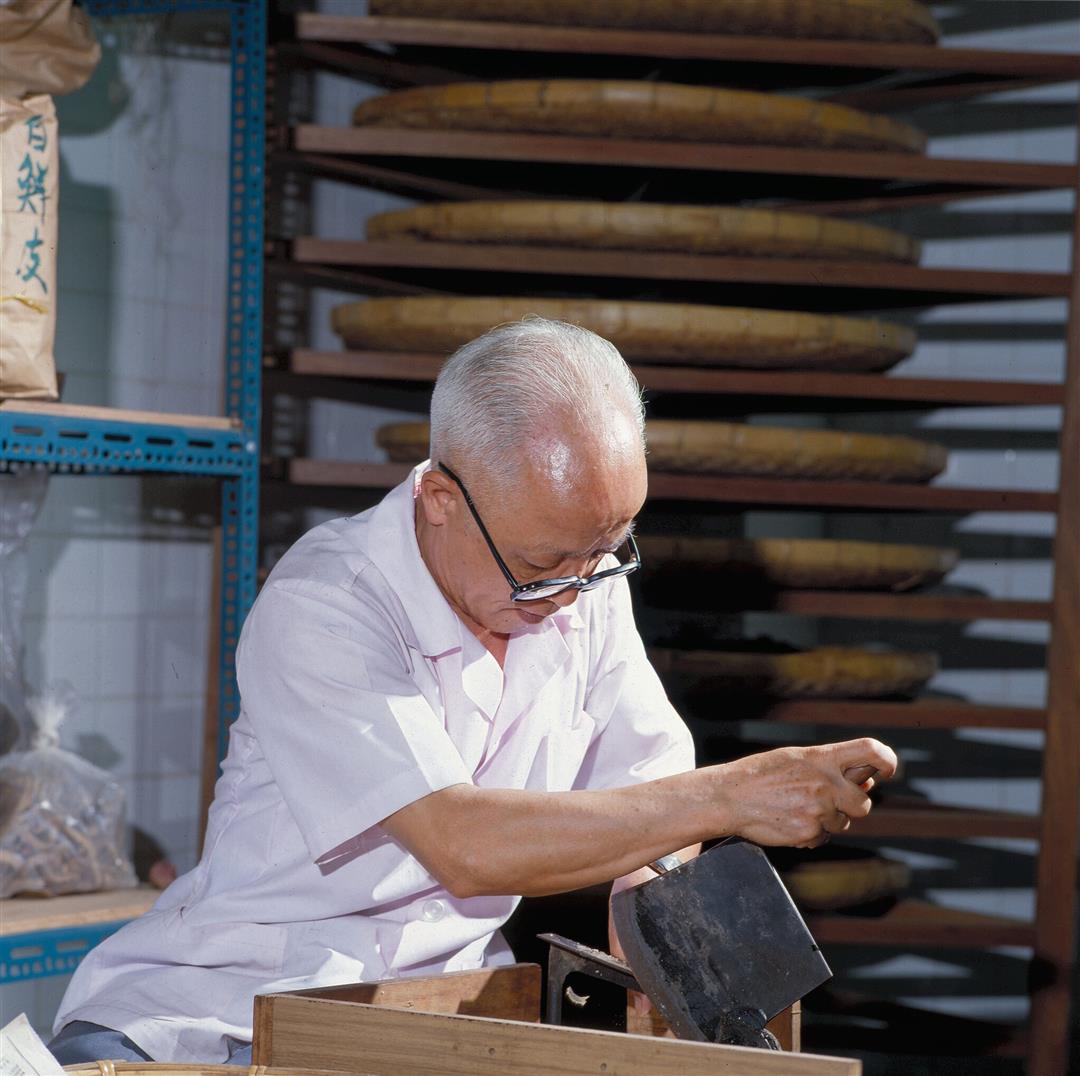
Cutting herbs into thin and even pieces is itself an art that takes time and skill to master.
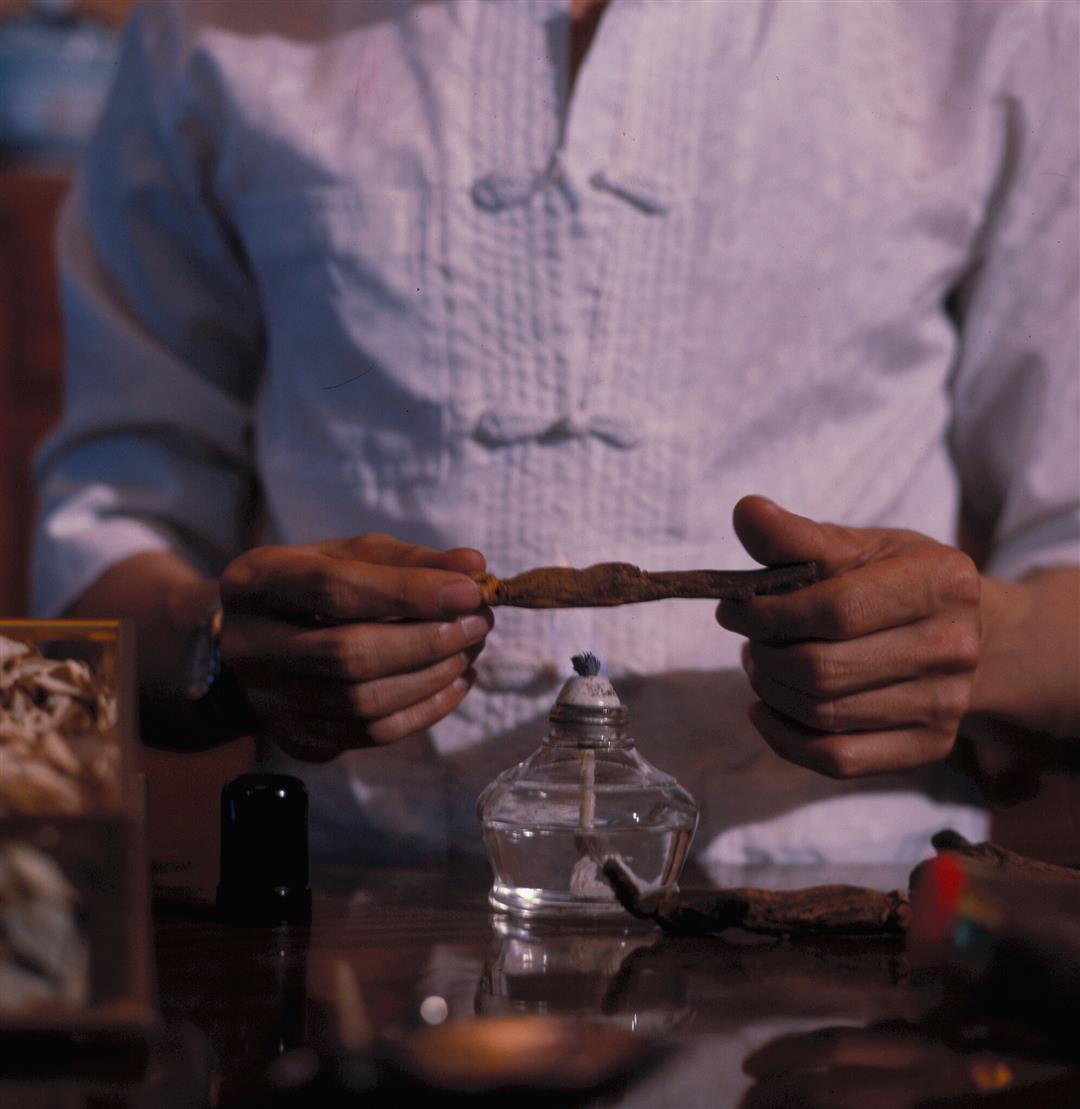
Before ginseng is cut into small slices, it must be baked soft over an alcohol burner.
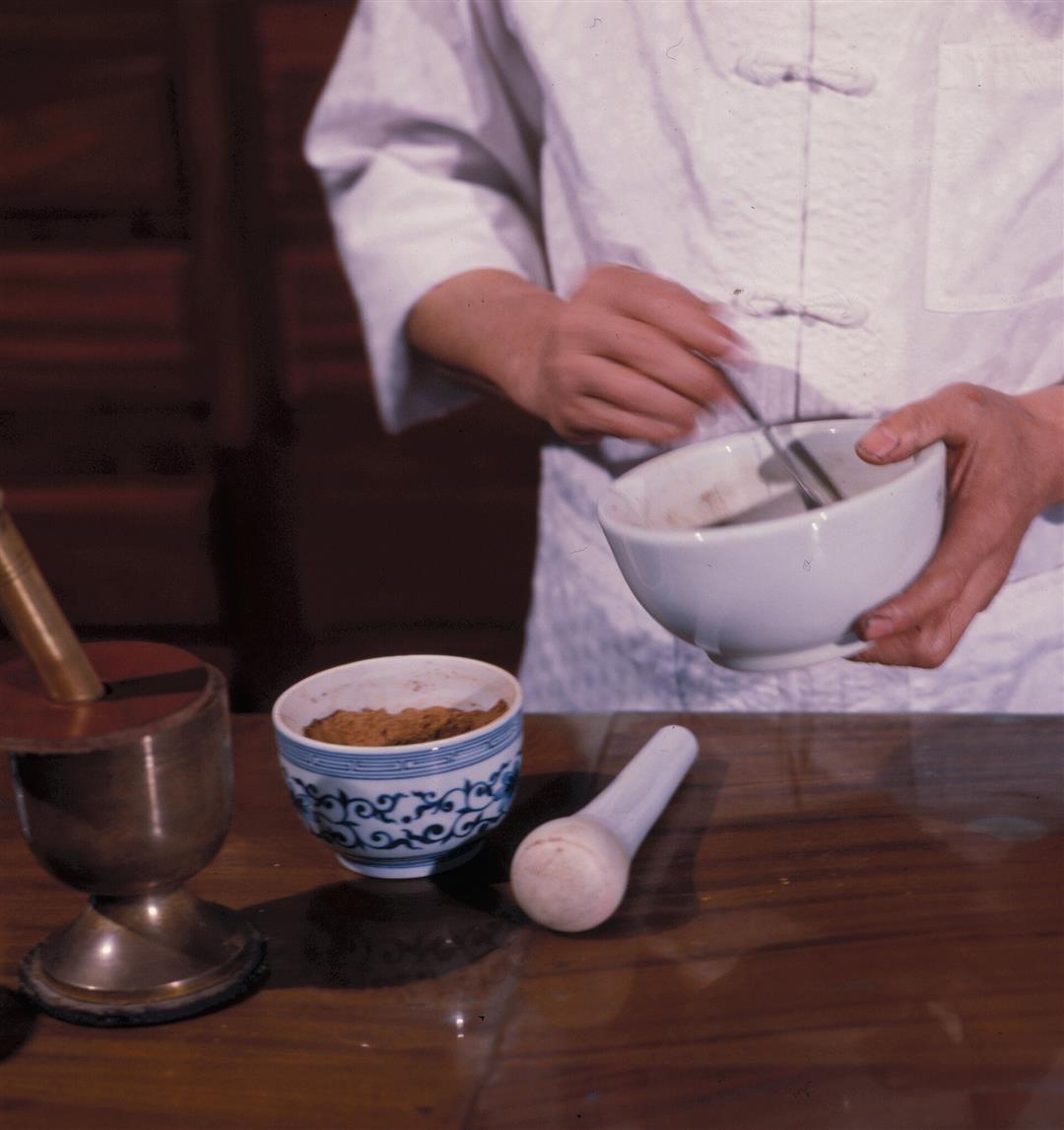
Herbs can be ground to small pieces with this white porcelain mortar and pestle.

A sieve is used to refine some ingredients.

More sturdy herbal materials must be pulverized in a small bronze pestle.

Powdered cinnabar is used in traditional medicine and as a painting material.
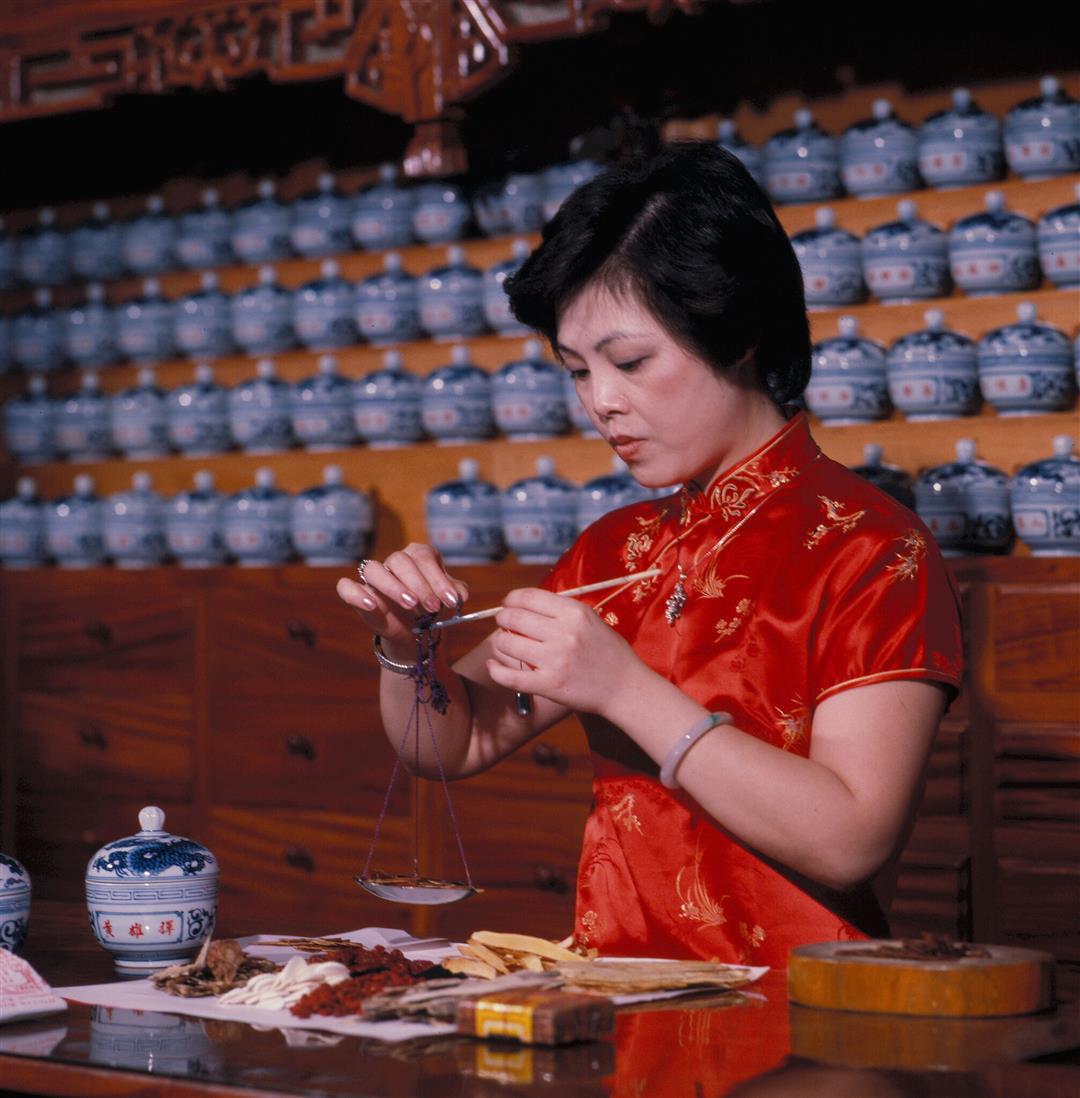
Precious herbs must be measured in small amounts.

All kinds of herbs are combined in a single dose.
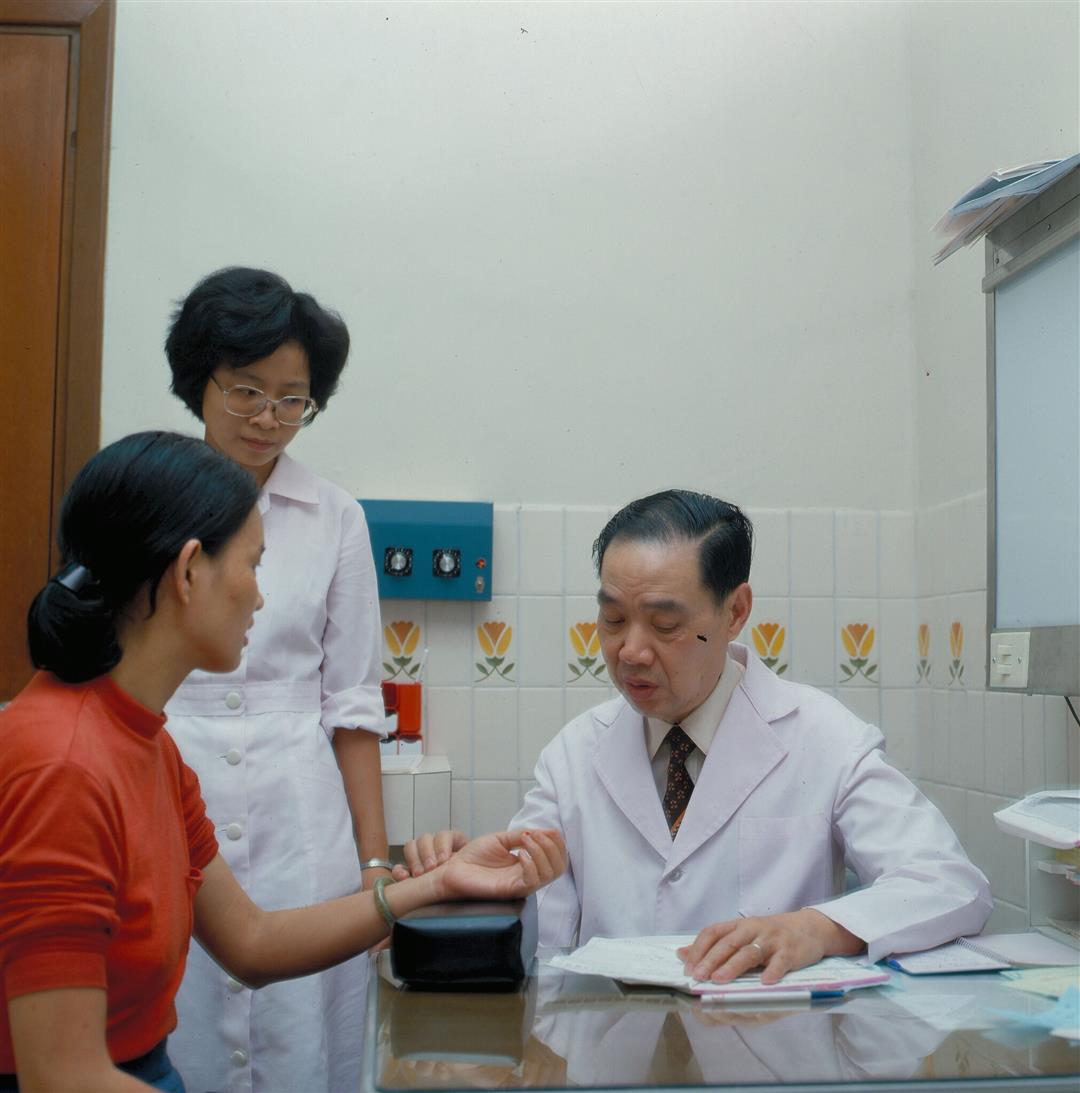
Doctor Ma Kuang-ya of the China Medical College Hospital takes a patient's pulse.

An American receiving acupuncture treatment at the China Medical College Hospital.

Doctors at the hospital use a stainless steel vessel to mix medicinal herbs.
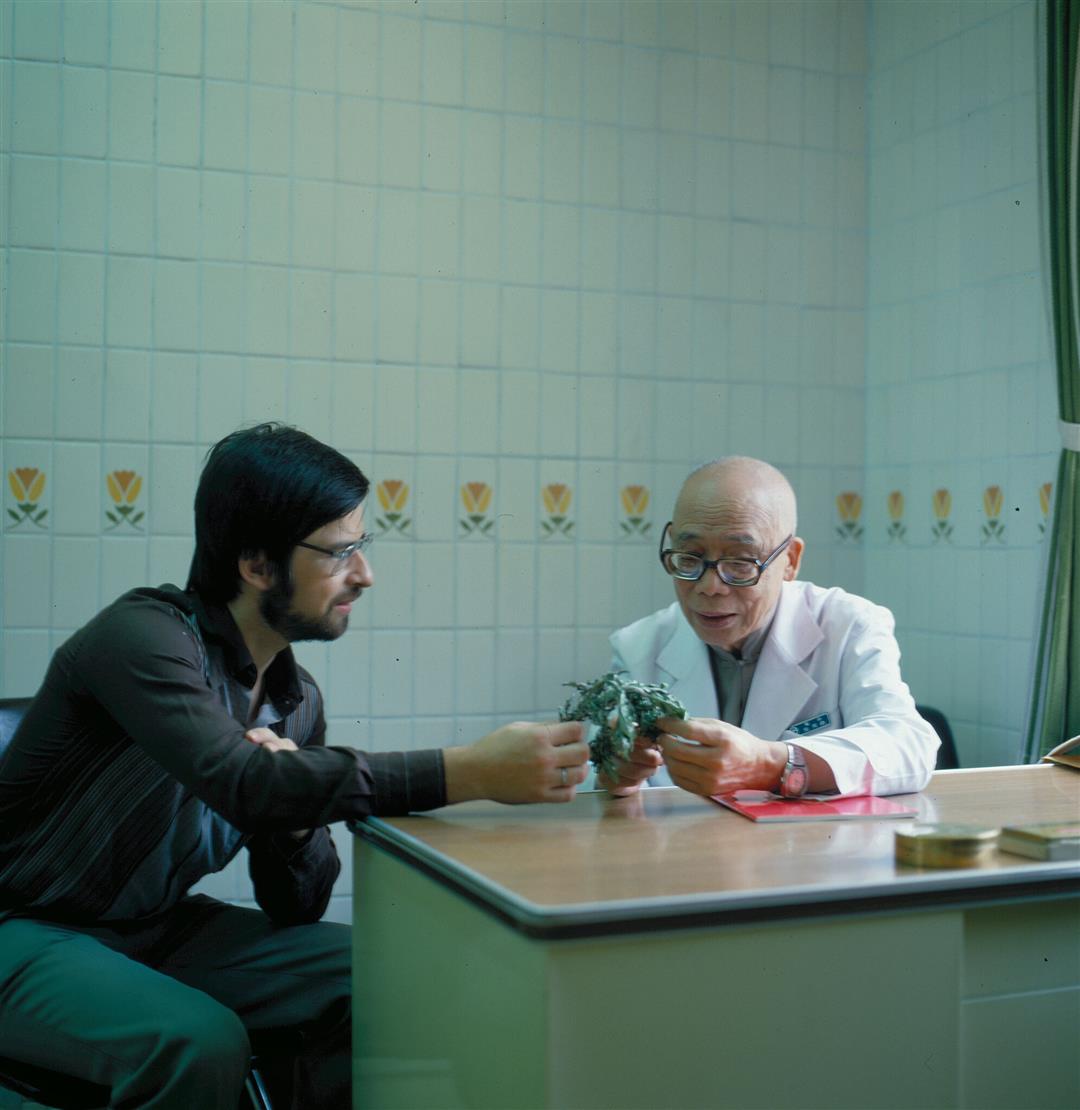
Ulrich Scherzler came from his home in West Germany to study the history of Chinese medicine in Taiwan. Picture shows him exchanging views with Pao Tien-pak, vice principal of the hospital, on the efficacy of treatment with medicinal herbs.

Though medicinal herbs mixed in a scientific way may not be any more effective than a herbal soup, some patients prefer the former.

The herb Encommiae ulmoide is particularly valued in Chinese medicine.